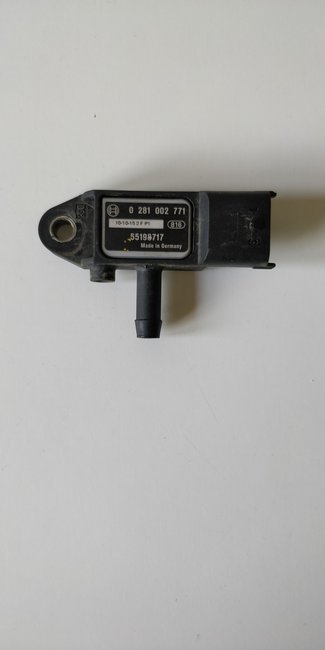Hi KaseKenny1,
Many thanks for your reply. I can confirm that we are talking about the same coil light (as given in the image in your post).
The DPF pressure sensor on my car (image attached) has two inputs but only one of them (the long input) is connected to the DPF; the other (the short input) measures atmospheric pressure. Hence, in my case, the DPF pressure sensor is measuring the pressure inside the DPF relative to atmospheric pressure. The readings of this DPF pressure sensor that I quoted in the previous post were from a new pressure sensor that was fitted after the coil light started flashing (based on advice from my mechanic).
After reading forums, I have understood that the ECU computes soot levels using two methods - the measured method - where the ECU computes soot levels based on differential pressure i.E. Based on the readings of the DPF pressure sensor and the other method - the calculated method - is where the ECU calculates the soot level based on parameters (other than the differential pressure) such as, maybe, miles driven, fuel consumed, lambda sensor readings etc.
First of all, is this two method determination of soot levels which I have explained correct?
Secondly, if it is correct, how does the ECU know when to base soot level determination on the measured method instead of the calculated method?
Image (Click to make bigger)
Wednesday, July 22nd, 2020 AT 1:59 AM




